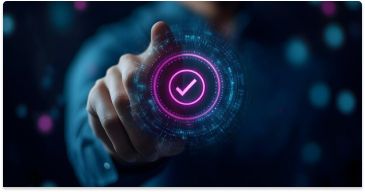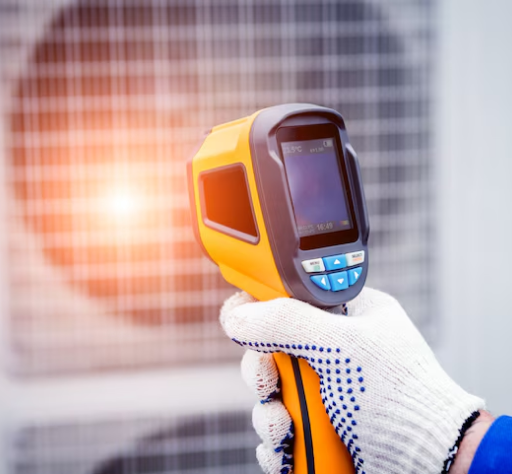Urgent Call


According to the Indian Telegraph (Amendment) Rules, (2003, 2006, and 2023), telecommunication equipment, both locally manufactured and imported, needs to pass certain tests before being sold in the market or implemented in the Indian telecom network.
These tests, determine whether the telecom product complies with the regulatory requirements established by the TEC. TEC, also known as Telecom Engineering Center is the technical wing of the Department of Telecommunications, Govt. of India.
The principal purpose of the MTCTE scheme:
1. Ensuring that, even if installed in existing networks, equipment will not degrade such networks' performance.
2. Ensuring the safety of the end-users themselves.
3. Protection of the user and public through regulation of radiofrequency emissions from equipment.
4. Ensuring compliance with the applicable national and international standards.
The MTCTE scheme is proposed to be implemented in phases, where each phase would cover different types of telecom products. Currently, notifications have been issued up to Phase III, IV, and V covering a wide range of telecom equipment. The latest Phase V has commenced from July 1, 2024.
Generally speaking, TEC grants three kinds of approvals:

The technology approval will be according to the standards associated with that product. This is called the Generic Requirement or GR, which was given by TEC. Testing is done on-site at the OEM's premises or in a lab environment. This approval requires EMC, Safety, Environmental Testing, etc. Approval under GR is required for bulk purchases by network service providers and under special requirements of government tenders

The IR here in TEC stands for Interface Approval, which is a type of TEC certificate confirming that products adhere to the stipulated interface requirements. Essentially, such certification signifies that the products can link with different networks and devices without a problem. Approval under IR is usually required by end-users in various institutions like schools, colleges, and corporate offices.

The Essential Requirements (ERs) are technical necessities consecutively formulated by the Telecommunications Engineering Center (TEC) for the evolving need for better technology.
The Essential Requirements describe the technical regulations prescribed under this framework which include:
- All three types of approvals require testing with varied intensity levels, depending on the intended use of the particular product or device
Fulfilling the MTCTE criterion requires passing three different tests for telecommunication equipment. These tests are EMC/EMI testing, safety testing, and telecom testing. If a telecom product passes all three tests, it is then eligible to be sold in the Indian market, or imported outside the country.
Electro Magnetic Interference (EMI) and Electro Magnetic Compliance (EMC) are paramount for Electrical/Electronic/Electro-Mechanical (E/E/E) systems to function normally without causing interference to other devices in close proximity as well as to be immune to disturbances and adverse conditions created by other devices nearby or by nature. For example, if lightning strikes nearby your smartphone doesn’t stop working. That is because it has been tested for EMC/EMI.
In this general process, testing usually involves the following,
01
Finding Applicable Standards:
Identifying the regulatory standards that apply to the device based on application.
Pre-compliance Testing:
Testing done in the early stages of design with the aim of identifying possible EMI problems before formal compliance testing. This can greatly increase the likelihood of successful final testing and keep the redesign costs down.
02
03
Formal Compliance Testing:
After the stage of pre-compliance, the device is tested in properly accredited laboratories for compliance with the necessary standards. This can be described as either emissions testing conducted or radiated, etc.
Testing generally involves multiple forms of specialized apparatus, which include:

Spectrum Analyzers
In general, they are used for calculating the frequency and amplitude of emissions.

Spectrum Analyzers
Used to control end reflection and noise in the surroundings.

Impedance Stabilization
Networks
They are used for conducted emissions testing.

In real-world conditions, it proves that the product provides its expected performance, which increases user confidence.

Can prevent disastrous failures that could come from unanticipated electromagnetic interaction.

Early design fixes save money by avoiding costly late-stage redesigns and compliance issues.
product itself while it is in use. Products are evaluated for proper design, choice of materials, physical layout of electrical components, and all those aspects that are likely to create hazards for the individual and the environment.
Products are tested for excessive heat while in normal operation, excessive leakage currents due to faulty design, use of fireproof or fire-resistant materials, and so on.
For example, if you are using your smartphone for long hours it may produce excessive heat which can then lead to internal circuit damage or even bigger accidents. To prevent these unwanted incidents safety testing becomes immensely important.
To ensure that telecom equipment is up to the mark and safe to use for the end users certain properties and functions need to be reviewed.

01. Excessive Heat
Telecom products tend to produce excess amount of heat due to prolonged use. This can be prevented using certain precautions. To ensure product safety, it is necessary to take note if the device cooling system is working properly.
02. Excessive Leakage Current
Excessive current leaks can cause failure in the electric circuit. To prevent electrical damage products are tested for excessive leakage current.
03.Fireproof Testing
Telecom products have a fireproof system or fire-resistant material installed in them during their development. Safety testing includes reviewing the fireproof system so that any anomaly doesn’t lead to a fire which may cause harm to the end user.
Safety testing is an important process by which the manufacturer and consumer of a product, and then the regulatory body, can have several advantages. Here are the main benefits.
01. Improved Quality and Reliability of Products
Product safety tests help to identify the defects and hazards that might be present in the product before launching it into the market. All products of good quality and those that are performing to the expected standards ensure high customer satisfaction and, as a result, bring in loyalty to the product.
02. Compliance with Regulations
The testing ensures that the products meet the various standards and regulations provided in the industry by bodies like the TEC in India. Compliance mitigates situations like legal tussles, fines, and potential recalls for both the manufacturer and consumers.
03. Risk Mitigation
Through the early identification of safety issues during the development process, companies are better equipped to dramatically reduce the ensuing risks of product failures, which could otherwise lead to both costly product recalls and lawsuits. This is critical for retaining brand reputation and consumer trust.
04. Consumer Protection
Safety testing on products protects consumers from harmful products and assures them that their product is safe when used according to the directions given, creating trust in the brand and marketplace.
05.Competitive Advantage
Products that meet the test of safety impart innovative marketing lines of being reliable and trustworthy, creating a differential advantage in the marketplace. This can also lead to an improved rate of sales and market share as consumers start flowing to brands that emphasize safety.
06. Long-term Cost Savings
Product safety testing, though requiring an upfront expense, can save money by preventing an expensive recall, legal battle, and brand reputation damage down the road. Better performance of products and fewer issues post-launch could happen following feature investment in thorough testing.
07. Improved Marketability
Certification of safe products makes products marketable in a better way, dramatically improving the organization's reputation and credibility with consumers, especially the retailers since most shoppers prefer using products with independent testing and certification.
Testing of the telecommunication systems, services, and even networks is referred to as telecom testing. It seeks to ensure that all the former work in terms of functionality, performance, and reliability.
Ensuring precise compliance with National and International standards is the main objective of this testing, besides its full compatibility with national telecom networks. To explain further, let’s assume you are traveling to another country.
1. 2W Analog
2. Acoustic
3. Digital Communications - Electrical
4. Digital Communications - Optical
5. Signalling
6. Protocol Conformance
7. Cellular 2G 3G 4G 5G
8. RF parameters
Meeting Specifications:
It ensures that the software conforms to the specifications and requirements of service providers and customers.
Defect Detection:
The detection and prevention of defects and errors prevent a failure in telecom services, malfunction, or interruption.
Improved Performance:
Such testing enables telecom software and associated systems to improve performance, efficiency, and even scalability.
Security and Privacy:
This would play a major role in improving the security and privacy levels of telecom data and transactions.
Cost Reduction:
This brings about a reduction in the risks involved and associated costs of maintenance and rework, hence reducing overall cost.
Increased Stakeholder Confidence:
It finally gives the stakeholders and the users confidence and faith in the functionality of the telecom ecosystem.
Sunren is not simply a testing lab, it’s your commited partner in all your testing needs. If you are planning to launch new telecom products in the Indian market, Sunren is ready to help you from the word go. Having thrived in the telecom and IT product testing industry for around 25 years, Sunren Technical Solutions Private Limited has never stopped upgrading with rapidly changing testing markers and new technologies.
Its well-equipped labs, experienced technicians, and unwavering commitment to the safety and reliability of telecom products automatically make it the leading telecom product testing lab in India
The strength of Sunren lies not only in state-of-the-art facilities but also in its expertise. At its core is a highly skilled team of technicians and engineers with decades of accumulated experience to ensure that the testing of your products is done with precision.
We are proud to be an ongoing wellspring of innovation through proactively updating ourselves as per the rapidly changing global benchmarks in standards and technologies. Equipped with state-of-the-art technology, our laboratory facilities offer efficient and effective testing.
Moreover, we are constantly updating ourselves with the new technologies in our space, to ensure we are one step ahead and can provide test facilities for regulatory requirements. Choosing Sunren is equal to choosing trust and experience.
At Sunren, we don't regard you as just a client; to us, you're a partner in the real sense. Our commitment to customer service doesn't stop at testing.
We are dedicated to long-term relationships and ensuring that your experience with us is seamless and productive. Clarity in communication, timely results, and responsive support are critical in every interaction. Competitive Timelines:
We know how time is very critical; hence, we offer flexible scheduling and quick turnarounds. Our team works with you closely to meet your timelines without compromising on the quality of our services.
All in all, more than providing testing services, we provide comfort to your technical headaches. So, contact us so that you can dream, and we can dare.
| S.N. | Essential Requirement/ Product Name | Product Variant Name | MTCTE Phase | andatory date of certification of product under MTCTE |
|---|---|---|---|---|
| 1 | 2- Wire Telephone Equipment | Line Feature Phone | Phase-1 | 1st October, 2019 |
| 2 | 2- Wire Telephone Equipment | IP (Calling Line Identification Presentation) Phone | Phase-1 | 1st October, 2019 |
| 3 | 2- Wire Telephone Equipment | Coin Box Telephone | Phase-1 | 1st October, 2019 |
| 4 | 2- Wire Telephone Equipment | Coin Box Telephone - Table Top Interface | Phase-1 | 1st October, 2019 |
| 5 | 2- Wire Telephone Equipment | Electronic Telephone Instrument | Phase-1 | 1st October, 2019 |
| 6 | 2- Wire Telephone Equipment | Executive Telephone Systems | Phase-1 | 1st October, 2019 |
| 7 | 2- Wire Telephone Equipment | Key Telephone Systems | Phase-1 | 1st October, 2019 |
| 8 | 2- Wire Telephone Equipment | Key Telephone Systems with proprietary interface | Phase-1 | 1st October, 2019 |
| 9 | 2- Wire Telephone Equipment | SD (National Subscriber Dialing) or ISD (International Subscriber Dialing) Payphone | Phase-1 | 1st October, 2019 |
| 10 | 2- Wire Telephone Equipment | Terminals for connecting to PSTN (Public Switched Telephone Network) | Phase-1 | 1st October, 2019 |
| 11 | G3 Fax Machine | FAX machine with handset | Phase-1 | 1st October, 2019 |
| 12 | G3 Fax Machine | FAX machine without handset | Phase-1 | 1st October, 2019 |
| 13 | Modem | V.90 or V.92 or V.21 to V.34 Modem | Phase-1 | 1st October, 2019 |
| 14 | Cordless Telephone | Cordless Telephone | Phase-1 | 1st October, 2019 |
| 15 | ISDN (Integrated Services Digital Network) Customer Premises Equipment | ISDN Gateway | Phase-1 | 1st October, 2019 |
| 16 | ISDN (Integrated Services Digital Network) Customer Premises Equipment | ISDN NT-1 Network Termination | Phase-1 | 1st October, 2019 |
| 17 | ISDN (Integrated Services Digital Network) Customer Premises Equipment | ISDN Terminal | Phase-1 | 1st October, 2019 |
| 18 | ISDN (Integrated Services Digital Network) Customer Premises Equipment | ISDN Terminal Adapter | Phase-1 | 1st October, 2019 |
| 19 | ISDN (Integrated Services Digital Network) Customer Premises Equipment | Multipoint Conferencing Server | Phase-1 | 1st October, 2019 |
| 20 | ISDN (Integrated Services Digital Network) Customer Premises Equipment | PC card based ISDN Terminal | Phase-1 | 1st October, 2019 |
| 21 | Private Automatic Branch Exchange | Private Automatic Branch Exchange | Phase-1 | 1st October, 2019 |
| 22 | PON (Passive Optical Network) Family of Broadband Equipment | PON OLT (Optical Line Terminal) | Phase-2 | 1st October, 2020 |
| 23 | PON (Passive Optical Network) Family of Broadband Equipment | PON ONT (Optical Network Terminal) | Phase-2 | 1st October, 2020 |
| 24 | PON (Passive Optical Network) Family of Broadband Equipment | PON ONU (Optical Network Unit) | Phase-2 | 1st October, 2020 |
| 25 | Feedback Device | Feedback Device | Phase-2 | 1st October, 2020 |
| 26 | Transmission Terminal Equipment-1 | Multiplexing Equipment | Phase-2 | 1st October, 2020 |
| 27 | Transmission Terminal Equipment-1 | SDH (Synchronous Digital Hierarchy) Equipment | Phase-2 | 1st October, 2020 |
| 28 | Equipments Operating in 2.4 GHz and 5 GHz Band | PTP PMP Wireless Access Equipment 2.4 or 5 GHz | Phase-3 | 1st January, 2024 |
| 29 | Equipments Operating in 2.4 GHz and 5 GHz Band | Wifi Access Points and CPE (Customer Premises Equipment) | Phase-3 | 1st January, 2024 |
| 30 | Equipments Operating in 2.4 GHz and 5 GHz Band | WLAN Controller Equipment | Phase-3 | 1st January, 2024 |
| 31 | End Point Device for Environmental Monitoring | End Point Device for Environmental Monitoring | Phase-3 | 1st January, 2024 |
| 32 | Repeater for Cellular Network | GSM and WCDMA Repeater | Phase-3 | 1st April, 2024 |
| 33 | Repeater for Cellular Network | GSM Repeater | Phase-3 | 1st April, 2024 |
| 34 | Repeater for Cellular Network | GSM WCDMA and LTE Repeater | Phase-3 | 1st April, 2024 |
| 35 | Repeater for Cellular Network | LTE (Long Term Evolution) Repeater | Phase-3 | 1st April, 2024 |
| 36 | Repeater for Cellular Network | WCDMA (Wideband Code Division Multiple Access) and LTE Repeater | Phase-3 | 1st April, 2024 |
| 37 | Repeater for Cellular Network | WCDMA (Wideband Code Division Multiple Access) Repeater | Phase-3 | 1st April, 2024 |
| 38 | Base Station for Cellular Network | BTS (Base Transceiver Station ) for GSM (Global System for Mobile Communication) | Phase-3 | 1st August, 2024 |
| 39 | Base Station for Cellular Network | BTS with AAS (Advanced Antenna Systems) | Phase-3 | 1st August, 2024 |
| 40 | Base Station for Cellular Network | BTS with MSR (Multi-Standard Radio) up to 4G | Phase-3 | 1st August, 2024 |
| 41 | Base Station for Cellular Network | eNodeB for LTE (Long Term Evolution) | Phase-3 | 1st August, 2024 |
| 42 | Base Station for Cellular Network | NodeB for WCDMA | Phase-3 | 1st August, 2024 |
| 43 | Compact Cellular Network | BTS CCN | Phase-3 | 1st January, 2024 |
| 44 | Compact Cellular Network | eNodeB CCN | Phase-3 | 1st January, 2024 |
| 45 | Compact Cellular Network | NodeB CCN | Phase-3 | 1st January, 2024 |
| 46. | IoT (Internet of Things) Gateway | IoT Gateway | Phase-3 | 1st January, 2024 |
| 47. | Tracking Device | Asset Tracking Device | Phase-3 | 1st January, 2024 |
| 48. | Tracking Device | Human Tracking Device | Phase-3 | 1st January, 2024 |
| 49. | Tracking Device | Pet Tracking Device | Phase-3 | 1st January, 2024 |
| 50. | Tracking Device | Standalone tracking device for Vehicle | Phase-3 | 1st January, 2024 |
| 51. | Smart Electricity Meter | Smart Electricity Meter | Phase-3 | 1st October, 2024 |
| 52. | Mobile Radio Trunking System | MRTS Base Station - Baseband plus Radio | Phase-4 | 1st August, 2024 |
| 53. | Mobile Radio Trunking System | MRTS Base Station - Radio Only | Phase-4 | 1st August, 2024 |
| 54. | Mobile Radio Trunking System | MRTS Baseband Equipment without Radio | Phase-4 | 1st August, 2024 |
| 55. | Mobile Radio Trunking System | MRTS Fixed Station | Phase-4 | 1st August, 2024 |
| 56. | Mobile Radio Trunking System | MRTS Handheld Portable Station | Phase-4 | 1st August, 2024 |
| 57. | Mobile Radio Trunking System | MRTS Mobile Station | Phase-4 | 1st August, 2024 |
| 58. | Conferencing Equipment | Audio Conference Facility Device | Phase-4 | 1st January, 2024 |
| 59. | Conferencing Equipment | Multi Line Telephone System | Phase-4 | 1st January, 2024 |
| 60. | HF (High Frequency) Radio | HF Base Station - Baseband plus Radio | Phase-4 | 1st April, 2024 |
| 61. | HF (High Frequency) Radio | HF Base Station - Radio Only | Phase-4 | 1st April, 2024 |
| 62. | HF (High Frequency) Radio | HF Baseband Equipment without Radio | Phase-4 | 1st April, 2024 |
| 63. | HF (High Frequency) Radio | HF Fixed Station | Phase-4 | 1st April, 2024 |
| 64. | HF (High Frequency) Radio | HF Handheld Portable Stations | Phase-4 | 1st April, 2024 |
| 65. | HF (High Frequency) Radio | HF Mobile Stations | Phase-4 | 1st April, 2024 |
| 66. | VHF (Very High Frequency) UHF (Ultra High Frequency) Radio System Equipment | VHF UHF Base Station - Baseband plus Radio | Phase-4 | 1st August, 2024 |
| 67. | VHF (Very High Frequency) UHF (Ultra High Frequency) Radio System Equipment | VHF UHF Base Station - Radio Only | Phase-4 | 1st August, 2024 |
| 68. | VHF (Very High Frequency) UHF (Ultra High Frequency) Radio System Equipment | VHF UHF Baseband Equipment without Radio | Phase-4 | 1st August, 2024 |
| 69. | VHF (Very High Frequency) UHF (Ultra High Frequency) Radio System Equipment | VHF UHF Fixed Station | Phase-4 | 1st August, 2024 |
| 70. | VHF (Very High Frequency) UHF (Ultra High Frequency) Radio System Equipment | VHF UHF Handheld Portable Stations | Phase-4 | 1st August, 2024 |
| 71. | VHF (Very High Frequency) UHF (Ultra High Frequency) Radio System Equipment | VHF UHF Mobile Stations | Phase-4 | 1st August, 2024 |
| 72. | PTP (Point to Point) PMP (Point to Multi Point) Microwave Fixed Radio Systems | PTP or PMP Full Outdoor Microwave Systems | Phase-4 | 1st August, 2024 |
| 73. | PTP (Point to Point) PMP (Point to Multi Point) Microwave Fixed Radio Systems | PTP or PMP Split MW Indoor Unit | Phase-4 | 1st August, 2024 |
| 74. | PTP (Point to Point) PMP (Point to Multi Point) Microwave Fixed Radio Systems | PTP or PMP Split MW Outdoor Unit | Phase-4 | 1st August, 2024 |
| 75. | PTP (Point to Point) PMP (Point to Multi Point) Microwave Fixed Radio Systems | PTP/PMP Split MW System | Phase-4 | 1st August, 2024 |
| 76. | Media Gateway | Line Media Gateway | Phase-4 | 1st January, 2024 |
| 77. | Media Gateway | Media Gateway | Phase-4 | 1st January, 2024 |
| 78. | Media Gateway | Media Gateway for CPE | Phase-4 | 1st January, 2024 |
| 79. | Signalling Gateway | Signalling Gateway | Phase-4 | 1st January, 2024 |
| 80. | Session Border Controller | Session Border Controller | Phase-4 | 1st January, 2024 |
| 81. | Softswitch | Softswitch | Phase-4 | 1st January, 2024 |
| 82. | DSL (Digital Subscriber Line) Equipments | DSLAM | Phase-4 | 1st January, 2024 |
| 83. | DSL (Digital Subscriber Line) Equipments | DSL Modem | Phase-4 | 1st January, 2024 |
| 84. | Satellite Communication Equipment | Satellite Amplifier | Phase-4 | 1st October, 2024 |
| 85. | Satellite Communication Equipment | Satellite Baseband Mod or Demod or Controller | Phase-4 | 1st October, 2024 |
| 86. | Satellite Communication Equipment | Satellite Baseband Modem | Phase-4 | 1st October, 2024 |
| 87. | Satellite Communication Equipment | Satellite Baseband Modem Controller | Phase-4 | 1st October, 2024 |
| 88. | Satellite Communication Equipment | Satellite BUC (Block Up Converter) | Phase-4 | 1st October, 2024 |
| 89. | Satellite Communication Equipment | Satellite IF Transceiver | Phase-4 | 1st October, 2024 |
| 90. | Satellite Communication Equipment | Satellite LNA (Low Noise Amplifier) | Phase-4 | 1st October, 2024 |
| 91. | Satellite Communication Equipment | Satellite LNB (Low Noise Block downconverter) | Phase-4 | 1st October, 2024 |
| 92. | Satellite Communication Equipment | Satellite Optimisation Equipment | Phase-4 | 1st October, 2024 |
| 93. | Satellite Communication Equipment | Satellite Radio Frequency Transceiver | Phase-4 | 1st October, 2024 |
| 94. | Satellite Communication Equipment | VSAT (Very Small Aperture Terminal) Terminals | Phase-4 | 1st October, 2024 |
| 95. | LAN (Local Area Network) Switch | L2 LAN Switch | Phase-4 | 1st August, 2024 |
| 96. | LAN (Local Area Network) Switch | L3 LAN Switch | Phase-4 | 1st August, 2024 |
| 97. | LAN (Local Area Network) Switch | MPLS (Multiprotocol Label Switching) TP (Transport Profile) CEN (Carrier Ethernet Network) Switch | Phase-4 | 1st August, 2024 |
| 98. | LAN (Local Area Network) Switch | L2 Unmanaged Switch | Phase-4 | 1st August, 2024 |
| 99. | Router | BNG (Broadband Network Gateway) or BRAS (Broadband Remote Access Server) Router | Phase-4 | 1st August, 2024 |
| 100. | Router | Cloud Control Capable Router | Phase-4 | 1st August, 2024 |
| 101. | Router | IPV4 (Internet Protocol v4) Router | Phase-4 | 1st August, 2024 |
| 102. | Router | IPV6 (Internet Protocol v6) Router | Phase-4 | 1st August, 2024 |
| 103. | Router | MPLS (Multiprotocol Label Switching) Router | Phase-4 | 1st August, 2024 |
| 104. | Transmission Terminal Equipment-2 | DWDM (Dense wavelength-division multiplexing) Equipment | Phase-4 | 1st January, 2024 |
| 105. | Transmission Terminal Equipment-2 | Digital Cross Connect | Phase-4 | 1st January, 2024 |
| 106. | IP (Internet Protocol) Security Equipment | Firewall Equipment | Phase-4 | 1st August, 2024 |
| 107. | IP (Internet Protocol) Security Equipment | Intrusion Detection System Equipment | Phase-4 | 1st August, 2024 |
| 108. | IP (Internet Protocol) Security Equipment | Intrusion Prevention System Equipment | Phase-4 | 1st August, 2024 |
| 109. | IP (Internet Protocol) Security Equipment | Unified Threat Management Equipment | Phase-4 | 1st August, 2024 |
| 110. | Precision Timing Protocol Grand Master Equipment | Precision Timing Protocol Grand Master Equipment | Phase-4 | 1st January, 2024 |
| 111. | Mobile Management Entity | MME with connectivity to MSC SGSN | Phase-4 | 1st January, 2024 |
| 112. | Mobile Management Entity | MME for LTE | Phase-4 | 1st January, 2024 |
| 113. | Cell Broadcast Centre | CBC for GSM | Phase-4 | 1st January, 2024 |
| 114. | Cell Broadcast Centre | CBC for LTE or LTE-A | Phase-4 | 1st January, 2024 |
| 115. | Cell Broadcast Centre | CBC For UMTS | Phase-4 | 1st January, 2024 |
| 116. | IP Multimedia Conferencing Equipment | IP Multimedia Conferencing Equipment | Phase-4 | 1st January, 2024 |
| 117. | BSC (Base Station Control) RNC (Radio Network Controller) | BSC for GSM | Phase-4 | 1st January, 2024 |
| 118. | BSC (Base Station Control) RNC (Radio Network Controller) | RNC for WCDMA | Phase-4 | 1st January, 2024 |
| 119. | SMLC (Serving Mobile Location Center) or eSMLC (Evolved Serving Mobile Location Center) | eSMLC for LTE | Phase-4 | 1st January, 2024 |
| 120. | SMLC (Serving Mobile Location Center) or eSMLC (Evolved Serving Mobile Location Center) | SMLC for GSM | Phase-4 | 1st January, 2024 |
| 121. | SMLC (Serving Mobile Location Center) or eSMLC (Evolved Serving Mobile Location Center) | SMLC for WCDMA | Phase-4 | 1st January, 2024 |
| 122. | SGSN (Serving GPRS Support Node) or GGSN (Gateway GPRS Support Node) | GGSN | Phase-4 | 1st January, 2024 |
| 123. | SGSN (Serving GPRS Support Node) or GGSN (Gateway GPRS Support Node) | SGSN For GSM | Phase-4 | 1st January, 2024 |
| 124. | SGSN (Serving GPRS Support Node) or GGSN (Gateway GPRS Support Node) | SGSN For LTE | Phase-4 | 1st January, 2024 |
| 125. | SGSN (Serving GPRS Support Node) or GGSN (Gateway GPRS Support Node) | SGSN For WCDMA | Phase-4 | 1st January, 2024 |
| 126. | HLR (Home Location Register) AUC (Authentication Center) HSS (Home Subscriber Server) | HLR or AUC | Phase-4 | 1st January, 2024 |
| 127. | HLR (Home Location Register) AUC (Authentication Center) HSS (Home Subscriber Server) | HSS | Phase-4 | 1st January, 2024 |
| 128. | MSC or MSC-S or GMSC or GMSC-S including VLR | MSC-S or GMSC-S | Phase-4 | 1st January, 2024 |
| 129. | MSC or MSC-S or GMSC or GMSC-S including VLR | MSC or GMSC including VLR for GSM | Phase-4 | 1st January, 2024 |
| 130. | MSC or MSC-S or GMSC or GMSC-S including VLR | MSC or GMSC including VLR for WCDMA | Phase-4 | 1st January, 2024 |
| 131. | Infiniband Switch | Infiniband Switch | Phase-4 | 1st January, 2024 |
| 132. | OTA (Over-The-Air) and DM (Device Manager) or FOTA (Firmware Over-The-Air) | DM or FOTA | Phase-4 | 1st January, 2024 |
| 133. | OTA (Over-The-Air) and DM (Device Manager) or FOTA (Firmware Over-The-Air) | OTA | Phase-4 | 1st January, 2024 |
| 134. | SCP (Service Control Point) | SCP | Phase-4 | 1st January, 2024 |
| 135. | OMC (Operations and Maintenance Center) or EMS (Element Management Systems) or NMS (Network Management Systems) or OSS (Operations Support System) | NMS | Phase-4 | 1st January, 2024 |
| 136. | OMC (Operations and Maintenance Center) or EMS (Element Management Systems) or NMS (Network Management Systems) or OSS (Operations Support System) | OMC or EMS | Phase-4 | 1st January, 2024 |
| 137. | S-GW (Serving Gateway) or P-GW (Packet Data Network Gateway) | P-Gateway | Phase-4 | 1st January, 2024 |
| 138. | S-GW (Serving Gateway) or P-GW (Packet Data Network Gateway) | S-Gateway | Phase-4 | 1st January, 2024 |
| 139. | SMSC (Short Message Service Center) | SMSC | Phase-4 | 1st January, 2024 |
| 140. | GMLC (Gateway Mobile Location Centre) | GMLC for GSM or WCDMA | Phase-4 | 1st January, 2024 |
| 141. | GMLC (Gateway Mobile Location Centre) | GMLC for LTE or LTE-A | Phase-4 | 1st January, 2024 |
| 142. | EIR (Equipment Identity Register) | EIR for GSM or WCDMA | Phase-4 | 1st January, 2024 |
| 143. | EIR (Equipment Identity Register) | EIR for LTE | Phase-4 | 1st January, 2024 |
| 144. | Optical Fibre Cable | Hybrid Cable - Optical and Metallic | Phase-4 | 1st January, 2024 |
| 145. | Optical Fibre Cable | Optical Fibre Cable - ADSS on Aerial alignment | Phase-4 | 1st January, 2024 |
| 146. | Optical Fibre Cable | Optical Fibre Cable - ADSS along Power line | Phase-4 | 1st January, 2024 |
| 147. | Optical Fibre Cable | Optical Fibre Cable - Direct Buried | Phase-4 | 1st January, 2024 |
| 148. | Optical Fibre Cable | Optical Fibre Cable - DSA | Phase-4 | 1st January, 2024 |
| 149. | Optical Fibre Cable | Optical Fibre Cable - Duct | Phase-4 | 1st January, 2024 |
| 150. | Optical Fibre Cable | Optical Fibre Cable - In home | Phase-4 | 1st January, 2024 |
| 151. | Optical Fibre Cable | Optical Fibre Cable - Indoor | Phase-4 | 1st January, 2024 |
| 152. | Optical Fibre Cable | Optical Fibre Cable – Indoor/Outdoor | Phase-4 | 1st January, 2024 |
| 153. | Optical Fibre Cable | Optical Fibre Cable - Micro-Duct | Phase-4 | 1st January, 2024 |
| 154. | Optical Fibre Cable | Optical Fibre Cable – Access Outdoor | Phase-4 | 1st January, 2024 |
| 155. | Optical Fibre Cable | Optical Groung Wire - OPGW | Phase-4 | 1st January, 2024 |
| 156. | SIM (Subscriber Identity Module) | CSIM (CDMA SIM) | Phase-4 | 1st August, 2024 |
| 157. | SIM (Subscriber Identity Module) | eSIM (Embedded SIM) | Phase-4 | 1st August, 2024 |
| 158. | SIM (Subscriber Identity Module) | eUICC (Embedded Universal Integrated Circuit Card) | Phase-4 | 1st August, 2024 |
| 159. | SIM (Subscriber Identity Module) | RUIM (Removable User Identity Module) | Phase-4 | 1st August, 2024 |
| 160. | SIM (Subscriber Identity Module) | SIM | Phase-4 | 1st August, 2024 |
| 161. | SIM (Subscriber Identity Module) | UICC (Universal Integrated Circuit Card) based ISIM | Phase-4 | 1st August, 2024 |
| 162. | SIM (Subscriber Identity Module) | USIM (Universal Subscriber Identity Module) | Phase-4 | 1st August, 2024 |
| 163. | Radio Broadcast Receiver RBR | All Motor vehicle RBRs requiring external power | Phase-4 | 1st January, 2024 |
| 164. | Radio Broadcast Receiver RBR | All RBRs driven with inbuilt power source | Phase-4 | 1st January, 2024 |
| 165. | Radio Broadcast Receiver RBR | Other devices having RBR interface | Phase-4 | 1st January, 2024 |
| 166. | Optical Fibre - Single Mode | Optical Fibre - G.652.D | Phase-4 | 1st January, 2024 |
| 167. | Optical Fibre - Single Mode | Optical Fibre - G.655 | Phase-4 | 1st January, 2024 |
| 168. | Optical Fibre - Single Mode | Optical Fibre - G.656 | Phase-4 | 1st January, 2024 |
| 169. | Optical Fibre - Single Mode | Optical Fibre - G.657. A1 | Phase-4 | 1st January, 2024 |
| 170. | Optical Fibre - Single Mode | Optical Fibre - G.657. A2 | Phase-4 | 1st January, 2024 |
| 171. | Optical Fibre - Single Mode | Optical Fibre - G.657. B3 | Phase-4 | 1st January, 2024 |
| 172. | Optical Fibre - Single Mode | Optical Fibre - G.654.D | Phase-4 | 1st January, 2024 |
| 173. | Optical Fibre - Single Mode | Optical Fibre - G.654.E | Phase-4 | 1st January, 2024 |
| 174. | Base station for cellular network for 5G | BTS with Multi Standard Radio | Phase-5 | 1st October, 2024 |
| 175. | Base station for cellular network for 5G | Active Antenna System-OTA | Phase-5 | 1st October, 2024 |
| 176. | Base station for cellular network for 5G | Base Station 5G NR Type 1C | Phase-5 | 1st October, 2024 |
| 177. | Base station for cellular network for 5G | Base Station 5G NR Type 1H | Phase-5 | 1st October, 2024 |
| 178. | Base station for cellular network for 5G | Base Station 5G NR Type 1O | Phase-5 | 1st October, 2024 |
| 179. | Base station for cellular network for 5G | Base Station 5G NR Type 2O | Phase-5 | 1st October, 2024 |
| 180. | Base station for cellular network for 5G | Hybrid Active Antenna System | Phase-5 | 1st October, 2024 |
| 181. | 5G Core | AMF (Access and Mobility Management Function) | Phase-5 | 1st July, 2024 |
| 182. | 5G Core | AuSF (The Authentication Server Function) | Phase-5 | 1st July, 2024 |
| 183. | 5G Core | BSF (Binding Support Function) | Phase-5 | 1st July, 2024 |
| 184. | 5G Core | CHF (Charging Function) | Phase-5 | 1st July, 2024 |
| 185. | 5G Core | NEF (Network Exposure Function) | Phase-5 | 1st July, 2024 |
| 186. | 5G Core | NSSF (Network Slice Selection Function) | Phase-5 | 1st July, 2024 |
| 187. | 5G Core | PCF (Policy Control Function) | Phase-5 | 1st July, 2024 |
| 188. | 5G Core | SMF (Session Management Function) | Phase-5 | 1st July, 2024 |
| 189. | 5G Core | SMSF (Short Message Service Function) | Phase-5 | 1st July, 2024 |
| 190. | 5G Core | UDM (Unified Data Management) | Phase-5 | 1st July, 2024 |
| 191 | 5G Core | UDR (Unified Data Repository) | Phase-5 | 1st July, 2024 |
| 192 | 5G Core | UPF (User Plane Function) | Phase-5 | 1st July, 2024 |
| 193 | Hypervisor | Hypervisor | Phase-5 | 1st October, 2024 |
| 194 | E-band Fixed Radio Relay System | E-Band MW Full Outdoor System | Phase-5 | 1st July, 2024 |
| 195 | E-band Fixed Radio Relay System | E-Band MW Outdoor System plus Indoor System | Phase-5 | 1st July, 2024 |
| 196 | Converged Multi service Application Access Equipment (C-MSAAE) | C-MSAAE | Phase-5 | 1st July, 2024 |
| 197 | IP (Internet Protocol) Terminal | SIP Terminal | Phase-5 | 1st October, 2024 |
| S.N. | Essential Requirement/ Product Name | Product Variant Name | MTCTE Phase | andatory date of certification of product under MTCTE |